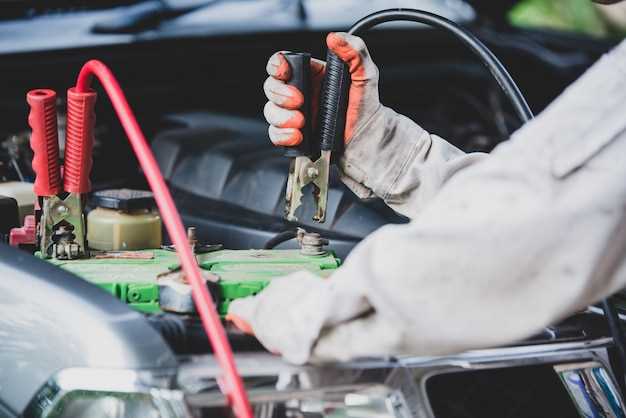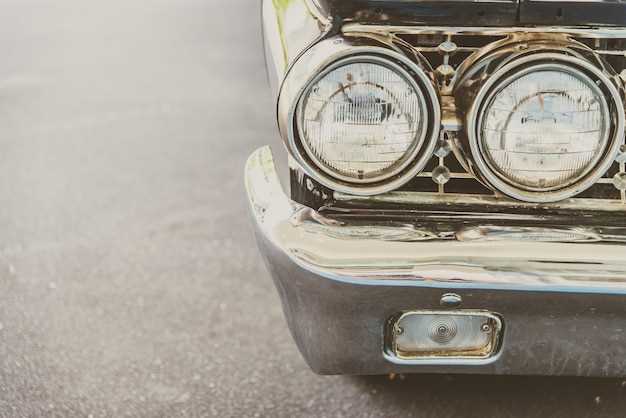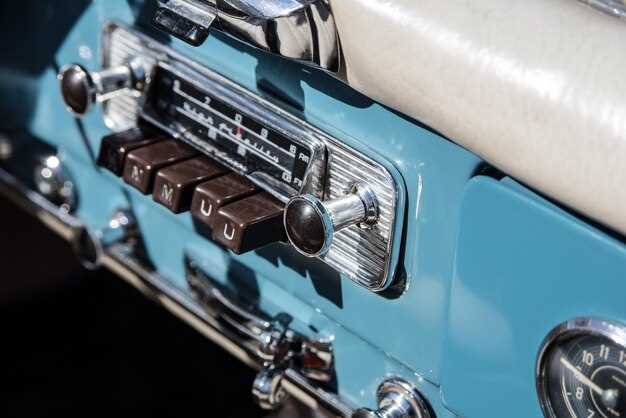
Maintaining the battery of your vintage muscle car is crucial to ensure its performance and longevity. These classic vehicles, often cherished for their powerful engines and unique designs, require special care when it comes to battery management. Whether you are a seasoned collector or a new owner, adhering to some essential tips can help keep your battery in optimal condition.
First and foremost, it’s important to regularly check the battery’s fluid levels. Unlike modern vehicles, many vintage muscle cars use lead-acid batteries which need adequate electrolyte levels for proper functioning. If the fluid is low, it can lead to decreased performance and, over time, permanent damage to the battery. Always top off with distilled water to ensure longevity.
Another key aspect of battery maintenance is to keep the terminals clean and free from corrosion. Corroded terminals can hinder the flow of electricity and lead to starting problems. Periodically inspect the battery connections and use a wire brush to remove any buildup, ensuring a good electrical contact. Following these simple, yet effective tips can help your vintage muscle car start easily and run smoothly.
Choosing the Right Battery for Your Vintage Muscle Car

Selecting the appropriate battery for your vintage muscle car is crucial for optimal performance and longevity. Start by identifying the correct group size, which indicates the physical dimensions and terminal configuration compatible with your vehicle. Consult your owner’s manual or do some research online to determine this specification.
Consider the battery type that best suits your needs. Lead-acid batteries are commonly used for classic cars due to their affordability and reliability. However, modern options such as AGM (Absorbed Glass Mat) batteries provide better vibration resistance and a longer lifespan, making them an excellent choice for muscle cars regularly driven.
Check the Cold Cranking Amps (CCA) rating of the battery. This value measures the battery’s ability to start your engine in cold temperatures. For vintage muscle cars, a higher CCA is preferable, ensuring your vehicle starts reliably regardless of weather conditions. Aim for at least 500 CCA for most V8 engines, but refer to specific requirements based on your car’s make and model.
Another factor is the reserve capacity (RC), which indicates how long the battery can provide power without the engine running. A higher RC is beneficial during long drives or car shows where electrical systems remain active without the engine running.
For aesthetic consistency, consider a battery design that matches your vintage car’s style. Many manufacturers offer retro-styled batteries that maintain the classic appearance while providing modern performance. This adherence to aesthetic will enhance your vehicle’s overall authenticity.
When purchasing a battery, choose a reputable brand known for quality and customer service. Read reviews and seek recommendations from fellow vintage car enthusiasts to ensure you make an informed choice.
Understanding the Unique Needs of Vintage Battery Systems
Vintage muscle cars often demand specialized attention when it comes to their battery systems. These vehicles, built at a time when battery technology was different, have unique requirements that differ from modern cars. One of the primary tips for maintaining vintage batteries is to choose the right type. Lead-acid batteries, particularly those with a high cold cranking amps (CCA) rating, are typically preferred for these older models to ensure reliable starts.
Another important factor to consider is the battery’s maintenance. Vintage batteries often require regular checks for corrosion, fluid levels, and the overall condition of terminals and cables. It’s advisable to clean the terminals periodically to prevent build-up that can disrupt connections and battery performance. Additionally, using a battery maintainer can help prevent discharge during long periods of inactivity, which is common among vintage vehicles.
Temperature extremes also pose a challenge for vintage batteries. It is crucial to avoid exposing the battery to extreme heat or cold, as these conditions can significantly impact performance and lifespan. Installing a battery insulation blanket can help regulate temperatures, ensuring that the battery operates at its best.
Lastly, consider the battery’s age and technology. While some vintage muscle cars may still have their original batteries, modern alternatives are often more reliable and efficient. Upgrading to a contemporary battery designed specifically for classic cars can provide better longevity and performance without compromising the vehicle’s vintage appeal.
Best Practices for Regular Battery Inspections

Regular battery inspections are essential for ensuring the longevity and reliability of your vintage muscle car’s battery. Start by checking the battery terminals for corrosion, as buildup can impede the flow of electricity. Clean any corrosion with a mixture of baking soda and water, and ensure connections are tight and secure.
Next, inspect the battery case for signs of damage or bulging, which can indicate internal failure. A damaged battery should be replaced promptly to avoid leakage or further complications.
Additionally, monitor the electrolyte levels in non-sealed batteries. They should be filled to the recommended level with distilled water if necessary. Proper storage conditions also play a vital role in battery health. Store batteries in a cool, dry place, away from direct sunlight and extreme temperatures to prevent degradation.
Finally, consider using a battery maintainer during prolonged storage periods. This device can help keep the battery charged without overcharging, ensuring that it remains in optimal condition when you’re ready to drive your muscle car again.
How to Charge and Maintain Your Battery Properly
Proper charging and maintenance of your vintage muscle car’s battery can significantly extend its lifespan and enhance performance. Here are essential tips to keep your battery in optimal condition:
Charging Tips
- Use a Quality Charger: Invest in a smart charger designed for automotive batteries. These chargers automatically adjust the voltage and current based on the battery’s needs.
- Monitor Voltage: Ensure your battery voltage remains between 12.4 to 12.7 volts when fully charged. Regular checks can prevent overcharging or undercharging.
- Charge Regularly: If your muscle car is not driven often, charge the battery every few weeks to maintain its health.
- Disconnect While Charging: To prevent electrical interference, disconnect the battery from the car before charging.
Maintenance Tips
- Clean Terminals: Regularly inspect and clean the battery terminals to prevent corrosion. Use a mixture of baking soda and water to eliminate any rust.
- Check Fluid Levels: For lead-acid batteries, maintain proper electrolyte levels. Top off with distilled water if necessary.
- Inspect for Damage: Routinely check for cracks, leaks, or any physical damage to the battery casing.
- Secure Battery: Ensure the battery is properly secured to prevent vibrations, which can lead to premature wear or internal damage.
Additional Considerations
- Store in a Cool, Dry Place: Extreme temperatures can negatively impact battery performance, so keep it in a stable environment.
- Use a Battery Maintainer: Consider a battery maintainer if your vehicle is stored for long periods. It keeps the battery charged without overcharging.
- Test Periodically: Conduct regular tests of your battery’s charge capacity to identify any signs of deterioration early.
By following these tips, you can ensure that your vintage muscle car’s battery remains healthy and reliable for years to come.
Storage Solutions for Extended Parked Periods
When storing vintage muscle cars for extended periods, it’s crucial to adopt proper battery maintenance practices to ensure optimal performance upon return. Here are essential tips to consider.
First, remove the battery from the vehicle if it will be parked for more than a month. This prevents any potential parasitic drain from onboard electronics. Store the battery in a cool, dry place, ideally where temperatures remain stable to avoid freezing or overheating.
Before storage, ensure the battery is fully charged. A fully charged battery minimizes the risk of sulfation, which can occur if the battery is left in a discharged state for too long. Regularly check the charge level every few weeks using a multimeter or a dedicated battery maintainer to keep it healthy.
Utilizing a battery maintainer or trickle charger designed for vintage vehicles can be a game-changer. These devices automatically supply a small amount of power to the battery, ensuring it remains charged without overcharging. This is particularly useful for lead-acid batteries found in many classic cars.
Consider cleaning the battery terminals and cable connections before storage. Corrosion can build up over time, affecting the battery’s performance. A simple solution of baking soda and water can effectively remove any buildup, enhancing connectivity when reinstalled.
Finally, ensure the battery is secured in its designated location during storage. Vibration or movement can damage the battery’s internal components, leading to premature failure. Keep the area around the battery free from debris and contaminants to maintain a clean storage environment.
Signs Your Vintage Car Battery Needs Replacement
Maintaining the battery in your vintage muscle car is essential for optimal performance and longevity. Here are key signs that indicate it’s time for a battery replacement.
| Sign | Description |
|---|---|
| Slow Engine Crank | If your engine takes longer than usual to start or sounds sluggish, the battery may not have enough power to crank the engine effectively. |
| Corrosion | Check for white, ashy deposits on battery terminals. Significant corrosion can prevent the battery from charging properly and may indicate the need for replacement. |
| Swelling or Bulging | A swollen battery case is a sign of internal damage. This can lead to leakage and indicates that your battery is no longer safe to use. |
| Age of the Battery | Batteries typically last between three to five years. If your battery is older than this, it’s time to consider replacement regardless of its current performance. |
| Frequent Jump Starts | If you find yourself jump-starting your vintage car regularly, it’s an indication that the battery is failing and may need a replacement. |
| Electrical Issues | Dim headlights, flickering gauges, and malfunctioning electrical components can be signs of a failing battery, affecting the overall performance of your vintage car. |
Being aware of these signs can help you maintain your vintage muscle car’s performance and avoid unexpected breakdowns on the road. Always follow best practices for battery maintenance and consult a professional when in doubt.




